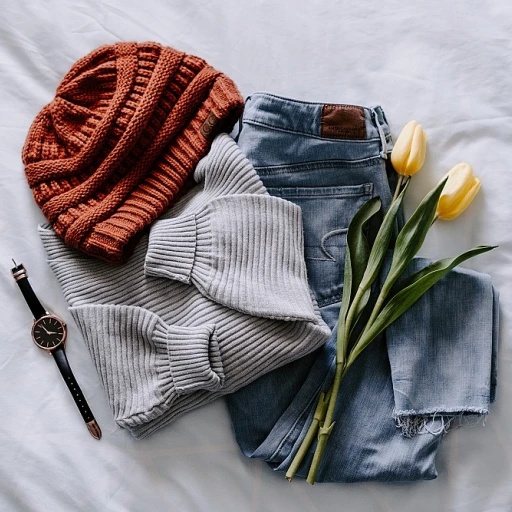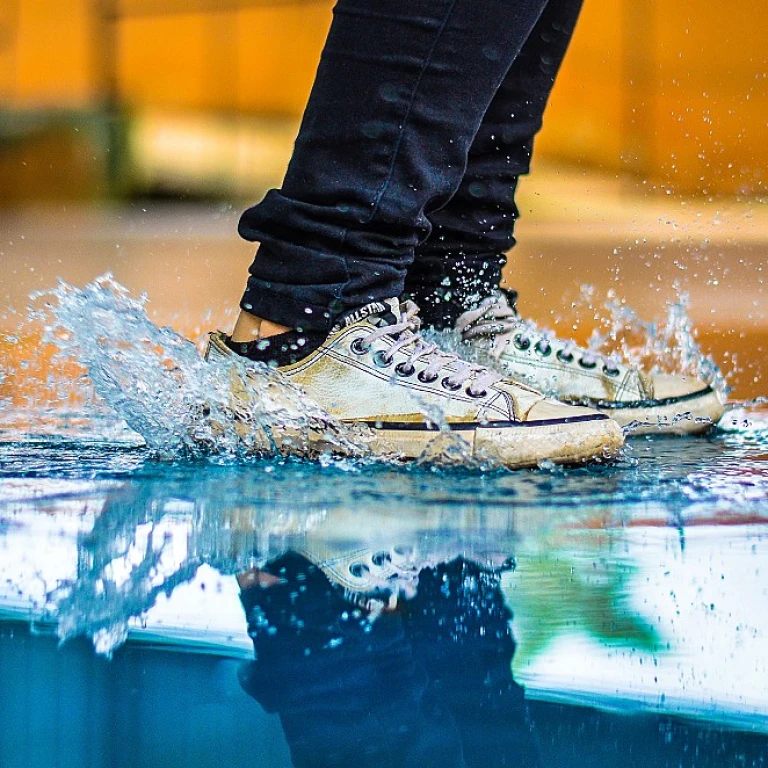Understanding Baby Clothes Sizes and Timing
Mastering the Timing of Baby Clothes Sizes
Navigating the world of baby clothes can often feel like traversing a maze, especially when it comes to understanding sizing and timing. Babies grow incredibly fast, and it’s no surprise that one day an outfit fits perfectly, and the next it’s too snug. It's crucial for parents to not just accumulate clothes but to anticipate growth patterns and plan accordingly.
So, how can you stay ahead in this fast-paced growth game? Begin by familiarizing yourself with the basic sizing chart for babies, which typically ranges from newborn (NB) up to 24 months, and then transitions into toddler sizes. Remember, brands may have slight variations, but generally, sizing will depend on the baby's weight and height more than age.
One of the tasks parents should keep at the forefront when dealing with baby clothing is organizing clothes, which you'll be glad to know, we've got covered in another part of our blog. It’s also helpful to keep an eye out for seasonal changes. Babies need different clothing items based on the time of year—think about the thickness of fabrics and whether you need long sleeves or short ones. This mindful approach ensures that your little one's closet is always curated perfectly for their growing needs.
If the task of understanding baby clothing sizes seems overwhelming, check out our guide on
navigating the world of baby clothes. It's brimming with insights and tips that can make this journey a breeze.
Choosing the Best Storage Solutions
Optimizing Your Storage Space
Selecting the right storage solutions for baby clothes can make a world of difference in keeping your nursery tidy and efficient. But with so many options out there, how do you choose the best one for your needs? First, consider the space you have available. Do you have a spacious nursery with ample closet space, or are you working with a smaller room where every inch counts?
When space is limited, think vertically. Stackable storage bins can make excellent use of tall closets, providing easy access to frequently used items while keeping out-of-season clothes out of the way. Hanging organizers are another great solution, perfect for holding smaller items like socks and hats.
For those fortunate enough to have a full closet available, utilize adjustable shelving units. These will allow you to customize your storage as your baby grows, making it easier to switch out clothing sizes and rearrange as necessary. Don't forget about under-crib storage either; it's often an overlooked area that can store quite a bit!
Choosing the Right Materials
Not all storage solutions are created equal, especially when it comes to the well-being of your child. It's important to opt for storage solutions made from safe, non-toxic materials. This is particularly vital when storing fabrics and clothes. Consider investing in storage bins that are specifically marketed as baby-safe.
On a similar note, keep in mind the ecological impact. There are numerous sustainable storage options on the market crafted from recycled or eco-friendly materials. Plus, if you're already investing in
top picks for organic baby clothes, maintaining that commitment to sustainability in your storage choices is a natural fit.
Finally, think about your system’s adaptability. As mentioned in our overview of understanding baby clothes sizes and timing, your child will inevitably grow. Opt for storage solutions that can adapt to the changing sizes and needs of a growing child to make the transition as seamless as possible.
Organizing Baby Clothes by Size and Season
Categorize by Size and Season
Organizing baby clothes by size and season is a game changer for maintaining order and efficiency in your little one's wardrobe. By categorizing these adorable garments, you'll simplify the process of dressing your child and ensure that nothing goes to waste due to being overlooked or outgrown.
Start by sorting all the clothes into size categories. Newborns grow incredibly fast, and you may find that clothes in smaller sizes are outgrown before they are worn more than just a handful of times. Thus, arranging clothes from smallest to largest will give you a clear view of what's available at any given stage. Incorporate clear labels or décor bins to keep things structured, which can also add a delightful decorative touch to the nursery.
Seasonal organization is equally important. Babies require very different wardrobes to accommodate the changing weather. Try organizing the clothes by the seasons in which they can be appropriately worn. For instance, garments suitable for warmer months such as rompers and short-sleeved tops should be stored together. Similarly, colder season clothing—think cozy onesies and fluffy cardigans—should also be grouped. This way, a quick glance at the closet will inform you of what's ready to go, allowing for stress-free dressing sessions every day.
With organized categories, planning outfits around seasonal changes becomes seamless. This strategy not only helps reduce clutter but also maximizes the usability of those oh-so-cute ensembles.
For more on how organizing different categories and clothes can boost your routine, check out our insights on
style boosting confidence. This practical approach allows you to stay ahead and make room for new sizes and styles as your baby continues to grow.
Handling Outgrown Baby Clothes
{"h3": "Creative Solutions for Handling Outgrown Baby Clothes
As your little one grows, you'll find a staggering amount of baby clothes quickly becoming too snug. It's not only important to stay organized but also practical when dealing with these charming yet rapidly outgrown garments.
Firstly, keep a designated space, like a storage bin or a section in your closet, specifically for outgrown clothes. This way, you can easily manage items your baby can no longer wear without them getting mixed up with their current wardrobe. Consider labeling these storage spaces with the size or season to make retrieval simple when it's time to assess the next course of action.
Next, decide what you'd like to do with these clothes. Passing them on to friends or family with younger children is a popular option. You can also choose to donate them to charity, knowing these tiny clothes will continue to serve a purpose and bring joy to other families. Remember, preparation is key; wash, fold, and organize them neatly before passing them along.
Alternatively, you might want to keep a few special pieces as keepsakes. Select items with sentimental value and store them separately. For instance, that adorable first onesie or the dress from their first birthday might serve as cherished memorabilia for years to come.
Finally, think about eco-friendly or creative projects if you're feeling crafty. Consider repurposing outgrown clothes into quilts, patchwork, or other household items. Not only does this give the clothes a second life but also adds a personal touch to your home.
By maintaining a flexible and thoughtful system for handling outgrown baby clothes, you'll find yourself with less clutter and more cherished memories. Remember, each stage your child goes through brings new adventures, and parting with their too-small clothing makes room for new experiences and outfits that match their growing personality.
Personal Stories: Real Moms Share Their Tips
Real Moms Reveal Their Secrets
When it comes to keeping baby clothes organized, who better to learn from than parents who've mastered the art? We reached out to real moms who shared personal strategies and successes in managing the ever-growing collection of adorable tiny outfits.
Firstly, many moms emphasize breaking down the organization by size and season. This not only ensures that your baby is always well-dressed for the current weather but also helps you plan ahead. One mom mentioned labeling storage bins by size and season, making it quick to swap out those newborn clothes for the next size up when the time comes.
Another creative strategy some moms use is DIY drawer dividers. Simple cardboard partitions or store-bought dividers can keep those tiny socks, onesies, and bibs neatly contained and easily accessible. Not only does this save time during those hectic mornings, but it also teaches children, as they grow, to maintain order in their collection of clothes.
Finally, don't hesitate to involve family and friends. Hand-me-downs can be a lifesaver, and many parents have formed a sort of exchange club where clothes are passed along to the next in line. This is not only economical but also eco-friendly. Each piece of clothing shares a story from one little adventurer to the next.
Remember, keeping baby clothes organized isn't just about storage solutions or planning; it's also about creating a system that works best for your unique family. With the right tips and a little creativity, you can ensure that dressing your little one is an effortless and delightful experience, leaving you more time to enjoy those precious moments.
Recommended Reading and Resources
Expand Your Knowledge with Helpful Reads
Exploring the world of baby clothes organization can be both exciting and overwhelming. To help you on this journey, we've compiled a list of recommended reading and resources that can offer additional insights and tips.
One of the first steps in managing your little one's wardrobe is understanding baby clothes sizes and timing. For those looking to delve deeper into this topic, consider checking out books and articles that break down the nuances of baby sizing and how growth spurts can affect your storage needs.
When it comes to choosing the best storage solutions, there are numerous blogs and guides available that provide creative and practical ideas. These resources can help you find the perfect storage options that fit your space and lifestyle.
Organizing baby clothes by size and season is another crucial aspect. Many parenting forums and websites offer community advice and seasonal checklists that can be incredibly useful. Engaging with other parents' experiences can provide new perspectives and innovative ideas.
Handling outgrown baby clothes often requires a thoughtful approach. Books on sustainable living and minimalism can offer strategies for decluttering and repurposing clothes, ensuring nothing goes to waste.
Lastly, personal stories from real moms can be a treasure trove of information. Consider joining parenting groups or following blogs where moms share their organization journeys, complete with tips and tricks that have worked for them.
By diving into these resources, you'll be well-equipped to keep your baby's wardrobe organized and efficient, making room for more precious moments with your little one.

